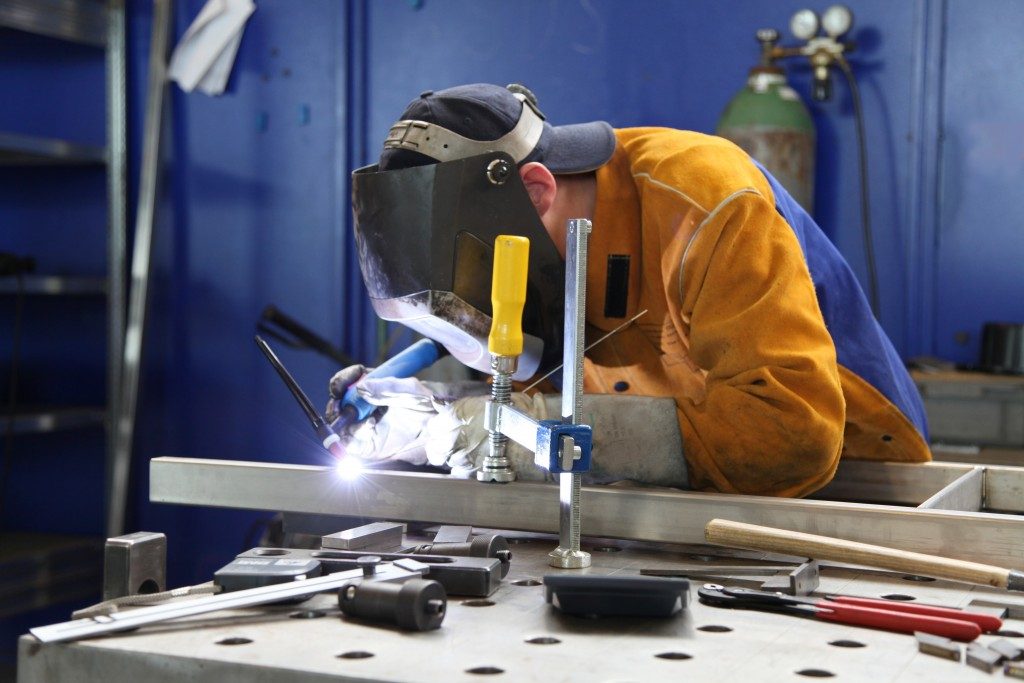Welding is not a life-threatening occupation provided that the proper safety precautions are in place. Safety is one of the most important considerations that go with this job. If there is a disregard for it in the workplace, the welder faces dangers like an electric shock, exposure to fumes and gases, fire, explosions, and more. Before grabbing those pipe rotators for welding in your Australia or New Zealand workplace, ensure that the following safety measures are in place:
Occupational Hazards
- Electric Shock – Since welding makes use of a live power source, an electric shock is one of the most common and threatening hazards in the business. Knowing and following the basic rules of electrical safety can help save your life.
- Exposure to Fumes and Gases – Gases like nitrogen oxide, nickel oxides, carbon monoxides, and chromium are by-products of the welding operation.
- Fire and Explosion – Due to the extreme heat generated in the welding process, sparks, heat, and molten spatters can potentially cause fires when they come into contact with flammable materials. Make sure your workplace has the proper fire protection measures in place.
- Injuries from Lack of Personal Protective Equipment (PPE) – PPEs ensure a welder’s safety by keeping him physically protected from the hazards of welding. The right PPE allows a worker to work comfortably and efficiently.

Safety Precautions
- Get Trained Properly – Before getting a job as a welder, get the proper education and training from an institution or a person. There are also online courses available that are cost-effective and easy to understand.
- Dress Appropriately – Make sure you have on the proper clothes for the job. Protective glasses, jackets, trousers, gloves, and boots all contribute to keeping you safe from any work-related hazard. Safety helmets, face shields, and earplugs are also important to the job.
- Use Your Welding Tools Safely – Always inspect your tools first before using them. Expired tools should no longer be used and should be properly disposed of. Maintain a certain distance from your tools as some have bad reactions to metal due to contamination. Clean your tools after use to keep it suitable for use and extend its longevity.
- Use Respirators – Respirators are necessary to protect you from certain gases and fumes produced by the welding process.
- Keep Your Body Covered At All Times – Do not roll up your sleeves or trousers as it enhances the risk of severe burns from sparks.
- Keep Your Gloves and Boots On – You are putting yourself at risk of burns whenever you take these off during work. You should only take them off during breaks or when work is done at the end of the day.
- Keep your Helmet On – The intensity of the radiation caused by welding could harm your eyes and face. Your helmet protects you from this. You may remove your helmet after the welding period. It is important to note that it is still best to keep your helmet on even if you are not the main welder during the welding period.
- Keep Your Workplace Well-Ventilated – A well-ventilated workplace keeps the gases from being confined in a small area. Ventilation helps get rid of toxic gases and particles that can cause workers serious harm.
- Keep Flammable Materials Away – Spark, molten spatters, and heat can set flammable materials on fire which can endanger the workplace.
Observance of proper safety measures and protocols can spell the difference between life and disaster. It is best to always adhere to safety practices and not compromise your health.